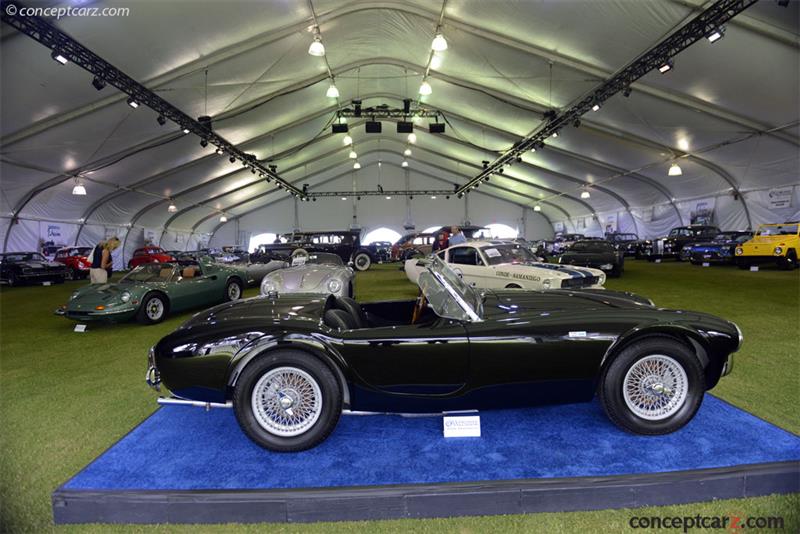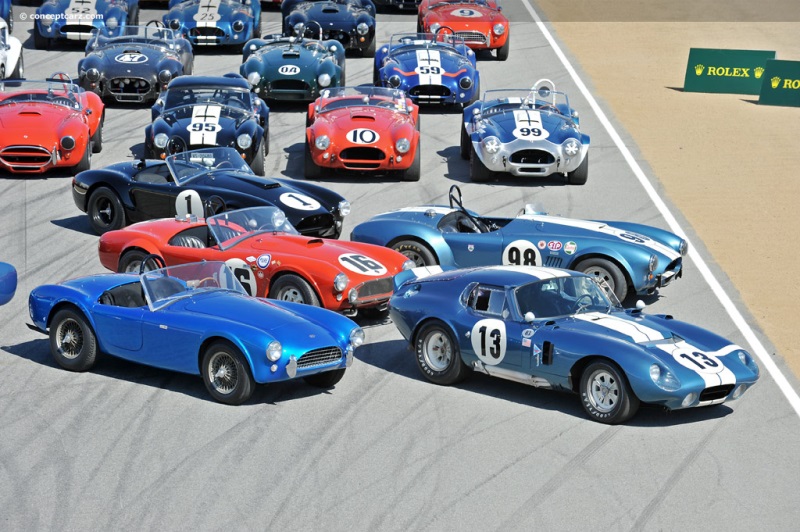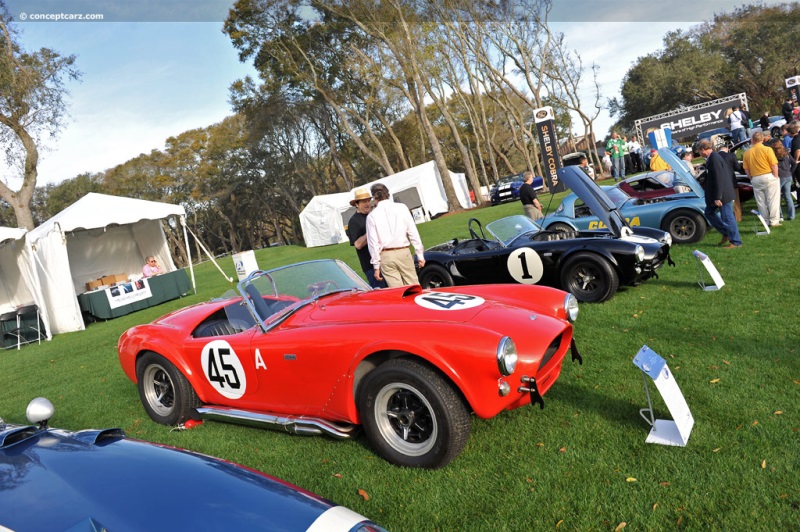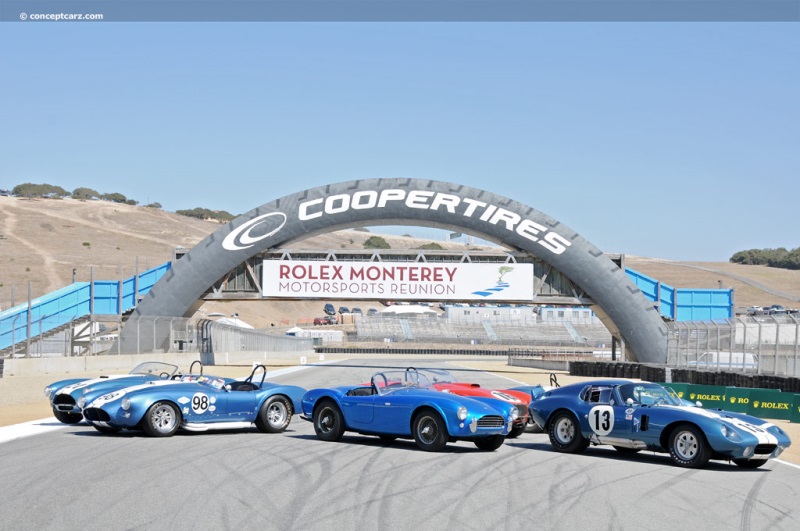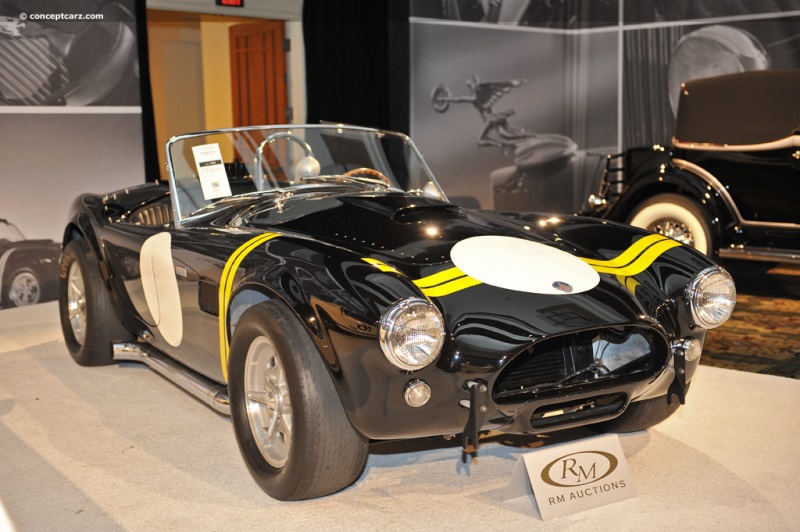Carroll Shelby's AC Ace-derived Cobra roadster launched Ford Motor Company's fledgling 'Total Performance' corporate racing program onto the international stage during the early 1960s. The Cobra was an integral step in Shelby America's 1965 FIA GT championship with the Daytona Coupe and Ford's eventual victory over Ferrari at Le Mans with the 1-2-3 GT40 finish in 1966. 
Roadster
Chassis #: CSX 2010By the early 1960s, stuffing a powerful large-bore motor into a lightweight body was nothing new. Shelby would, however, become one of the most successful purveyors of the idea due to his marketing savvy engineering vision and fortuitous timing. Shelby approached England's AC Cars in 1961, with the intention of installing a Ford V-8 engine into the AC Ace Roadster. The resulting Shelby Cobra would eventually become the ultimate execution of the big engine and little car concept. It would become one of the most successful dual-purpose roadsters of American racing and sports car production and a feared competitor on the SCCA racing circuit and the European FIA championships. The AC Ace roadster was lightweight and well-proven and had an independent suspension and an aging six-cylinder engine. The AC engine was a long-lived single overhead camshaft six whose design dates back to 1919. AC had improved upon performance by using the Bristol six, adapted from a prewar BMW design. Both were heavy and aging, and Bristol announced it was discontinuing production of the two-liter six. This would leave the AC with an empty engine compartment. Shelby used the opportunity to install a new generation of lightweight, powerful, deep-breathing, reliable, and modern American V8 engines. The first was Ford's new thin-wall casting 260 cubic-inch V8 which offered in excess of 300 horsepower with a four-barrel carburetor. Much more power could be extracted even with rudimentary tuning, effectively doubling the power of the old Bristol six with only a slight increase in curb weight. Another feature was the compact size of the V8 engine, allowing it to be positioned farther back in the chassis resulting in better weight distribution.The chassis of the Ace was designed by John Tojeiro and much of the lightweight aluminum body is owned to early Ferrari barchettas built by Touring. It was hoped that the Tojeiro-designed chassis could cope with the drastic power produced by the V8 engine. It was quickly realized that bigger tires were required to transfer the power to the road, which also increased cornering forces. Larger and better brakes were needed to handle the higher velocities, introducing even more stress to the chassis and mechanical components. Additional modifications to accept the Ford engine were easily resolved and communicated to AC Cars. 
Roadster
Chassis #: CSX 2025
Auction entries : 1Just as Shelby enterprises was gaining traction, Lance Reventlow shut down his Scarab shop in Venice, California. Shelby seized the opportunity and moved into the Scarab shop as the first Cobra chassis arrived from AC in Thames Ditton, not only acquiring a fully equipped race car construction facility but also the mechanical expertise of Phil Remington, whose resume included everything from hot rods to USAC Champ cars. Among his talents were fabrication and welding, which quickly were applied to the Cobra, whose steering gear was not able to handle the cornering stresses. Remington rebuilt it. He also redesigned and constructed the lower A-arms from high-strength tubing with bronze bushings replacing the Ace's rubber. New wheel hubs were added to hold the wider wheels and tires. The hoods were louvered to exhaust air and the engines from Ford received four-barrel carburetors, racing headers and exhaust system, and new oil pans with increased oil capacity and baffles to keep an oil supply around the pump pickup during cornering. Anti-roll bars were added to the suspension.With his sights set on the FIA's World Manufacturers Championship, Carroll Shelby initiated homologation paperwork with the FIA to make the Cobra eligible for international competition. This meant the early Cobras were built as race cars, with roll bars, racing windshields, competition belts, quick jack pickups, cooling scoops, safety-wired fasteners, and armored hoses. 
Roadster
Chassis #: CSX 2010In October of 1962, Billy Krause brought the Cobra to Riverside where it quickly outpaced the new Corvette String Rays until it was forced to retire due to a broken rear hub. Remington machined new ones from Halibrand forgings for both the front and rear. One Cobra was sent to Nassau for the Bahamas Speed Week in December where it was driven again by Billy Krause. While running in second place during a preliminary race, a steering tie rod broke, forcing another early retirement. The car was hastily repaired in hopes of racing in the feature event. Krause began from the back of the pack and was chasing down the race leaders when the Cobra stopped due to an empty fuel tank that had not been fully filled before the start of the race. Ken Miles was then enlisted for chassis development, particularly focusing on the transverse leaf spring independent suspension. The goal was to find a solution that could handle straight-line performance and cornering. Development tests included varying the length of the springs, adding Koni shocks, and anti-roll bars. While the suspension was being sorted, the Cobra continued to get faster, which created even more stress, which meant everything had to be continually improved and strengthened. For the Cobra, it was certainly true that 'racing improves the breed.'For 1963, Krause went to the race with Mickey Thompson so Dave MacDonald was brought onboard to race the Cobra. By January of 1963, the first racing Cobra was able to complete 500 miles of tire testing at Riverside. On February 3rd, the Shelby team made its third competitive appearance, this time in the SCCA Divisional race at Riverside where two Cobras were entered, driven by MacDonald and Miles. The Cobras would finish in 1st and 2nd (the winning Cobra was chassis number CSX 2026 driven by MacDonald).
Roadster
Chassis #: CSX2001
View info and historyAfter the early successes of the season, the team would prepare six cars for the 12-hour race at Sebring. These cars would have some special modifications including quick-change pins on the front brakes, Halibrand magnesium wheels, and, for the first time, rack and pinion steering. A number of other revisions had to do with body-to-chassis fit and other small tweaks that would help the team's performance over 12 hours of racing. Unfortunately, despite all of the modifications and performance tweaks, just one car would end up making it to the finish of the race.For the 1963 24 Hours of LeMans race in France, three Factory Team cars were prepared with over 40 modifications from the standard racing Cobras. The changes were in compliance to rules enforced by the Automobile Club de l'Ouest and to meet the demands of the grueling 24-hour race. They were given larger front and rear fender flares, bigger vents in the front fenders, a 37-gallon fuel tank with a wider-necked filler, and an integral hood scoop with no screen inside. The engine received four Weber DC48IDM carburetors and a larger aluminum radiator. They were given modified steering arms and the rack-and-pinion steering gear was reduced to help with driver fatigue. Many additional modifications were made to reduce weight, comply with regulations, and improve performance.Two cars were brought to LeMans, with one entered by AC Cars and managed by Stirling Moss and driven by Bolton/Sanders to a seventh overall, third in the GT category, and a victory in the 4-5 liter class. The other car was entered by American privateer Ed Hugus, which was disqualified early in the race due to adding oil 'fluids' during the first 25 laps. 
Roadster
Chassis #: CSX2001
View info and historyThe success at LeMans convinced Shelby to construct six more Cobras called the Le Mans version and was given the rack-and-pinion steering. They were sold to privateers and raced with varying degrees of success. A more aerodynamic coupe was built for the 1964 season, following a design by Peter Brock. It was known as the Cobra Daytona Coupe and was very fast down the straights, allowing Shelby to outclass Ferrari and win the GT class at LeMans. Shelby American produced 654 small-block Cobras in growing numbers from 1962 through 1965. Among those were 579 examples of the 289-powered cars and 75 of the earlier and original 260-CID powered cars.
by Daniel Vaughan | Feb 2020

Roadster
Chassis #: CSX 2010

Roadster
Chassis #: CSX 2025
Auction entries : 1
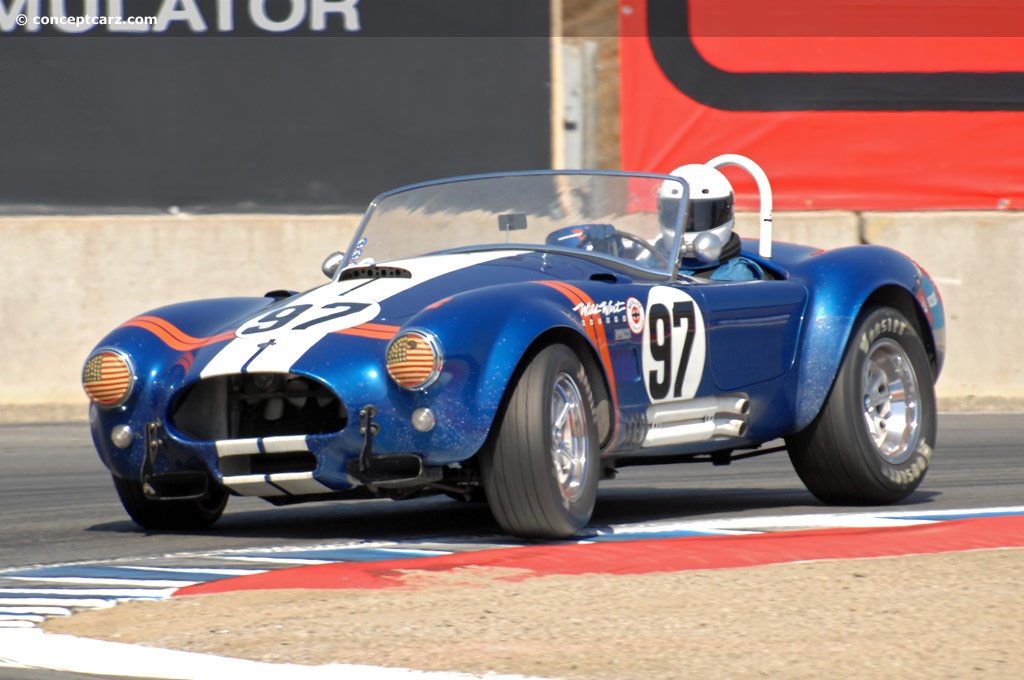
Roadster
Chassis #: CSX 2010
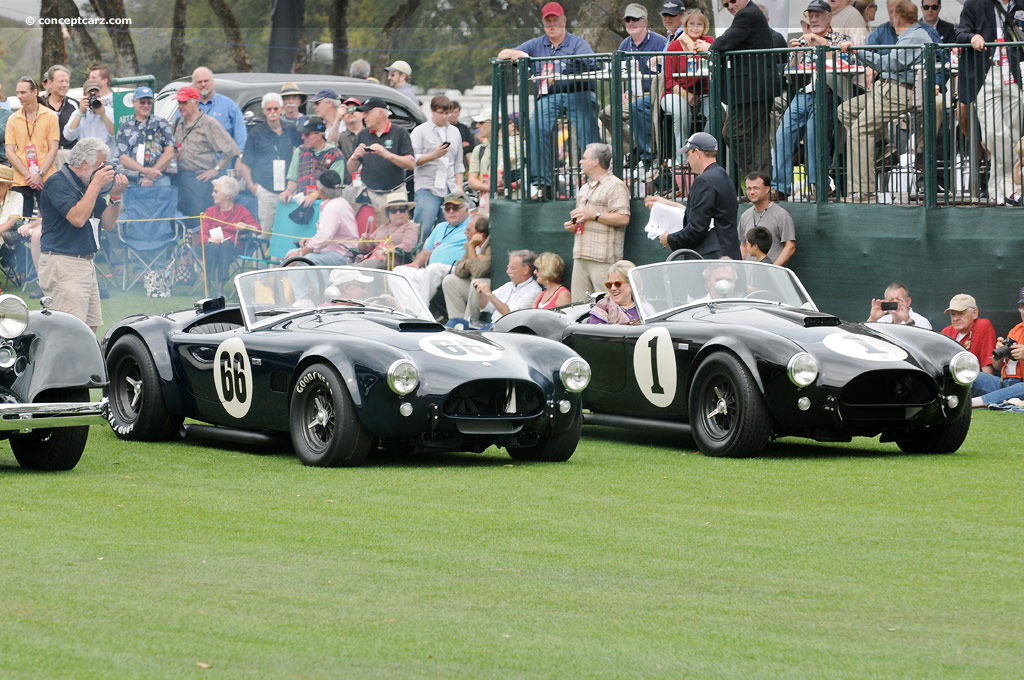
Roadster
Chassis #: CSX2001
View info and history
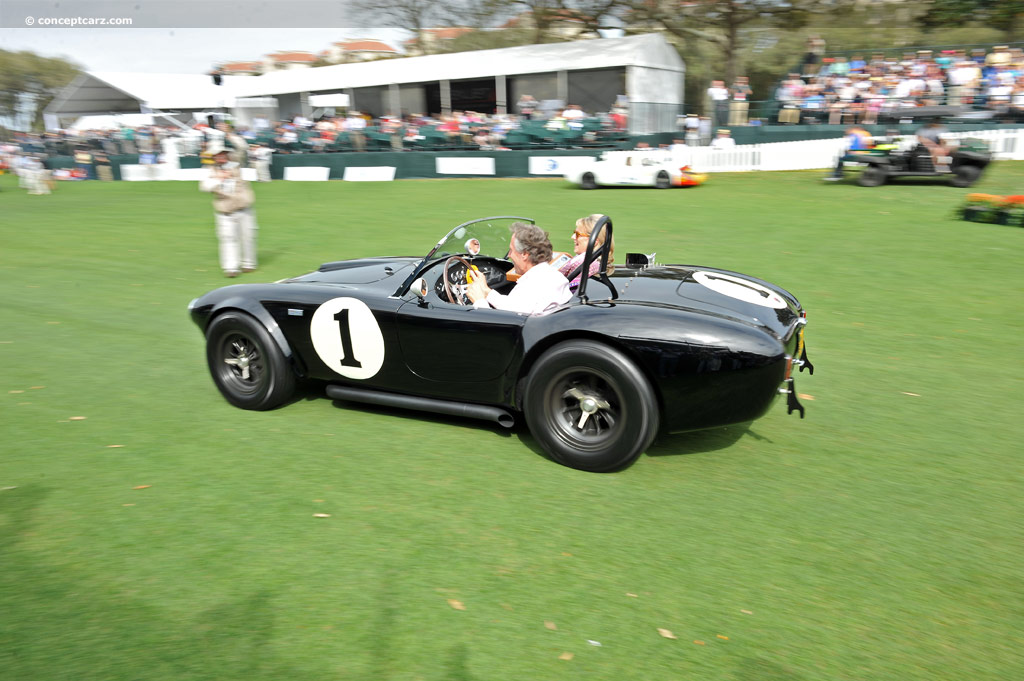
Roadster
Chassis #: CSX2001
View info and history
by Daniel Vaughan | Feb 2020
Related Reading : Shelby Cobra History
The formula for the success of the Cobra came through a man named Carroll Shelby adapting a powerful Ford engine into a nimble, British sports car. A.C. Cars of Thames Ditton in Surrey, England had been producing the Ace since 1954. It was designed by John Tojeiro and featured an independent suspension by transverse leaf springs. The tubular frame body of the vehicle took its styling cues from....
Continue Reading >>
Continue Reading >>
Similar Vehicles
Similarly Sized Vehicles
from 1962
1962 Shelby Cobra Vehicle Profiles
Recent Vehicle Additions
Performance and Specification Comparison
Cobra 260 Specification Comparison by Year
Year
Production
Wheelbase
Engine
Prices
Related Automotive News

THE MOST IMPORTANT AMERICAN SPORTS CAR TO EVER BE OFFERED FOR SALE
THE VERY FIRST SHELBY COBRA, CSX 2000, SET FOR RM SOTHEBYS MONTEREY PODIUM
Unprecedented sale RM Sothebys presents the first Shelby Cobra—CSX 2000—at its flagship Monterey, California sale, August 19-20
Offered by the Carroll Hall Shel...

Renowned Racing Legends Grant Exclusive Nod to the Rolex Monterey Motorsports Reunion for New Run Groups
As the Rolex Monterey Motorsports Reunion celebrates the Golden Anniversary of historic racing at Montereys WeatherTech Raceway Laguna Seca, the illustrious gathering also honors the history and significant achievements throughout time. It seems fitting...

The Estate Collection of Respected Privateer Racer William M. Wonder Coming to Gooding & Company's Pebble Beach Auctions
This August, the auction house will present offerings from the estate of the legendary William M. Wonder, including a 1999 Ferrari 333 SP, a 1955 Mercedes-Benz 300 SL Gullwing, and a 1990 Spice SE90P GTP.
The official auction house of the Pebble...
RRDC VOTES IN 26 NEW MEMBERS FOR 2015
HILLIARD, Ohio (Oct. 23, 2015) - Twenty-six race-car drivers and motorsports professionals have been voted into the Road Racing Drivers Club in 2015. The group includes 11 Regular Members from the open-wheel and sports-car racing ranks, 10 Associate...
RRDC VOTES IN 37 NEW MEMBERS FOR 2013
HILLIARD, Ohio (Nov. 7, 2013) - Thirty-seven race-car drivers and motorsports professionals have been voted into the Road Racing Drivers Club in 2013. The group includes 13 Regular Members from the open-wheel and sports-car racing ranks, 20 Associate...

Sonoma Historic Motorsports Festival Celebrates Corvette'S 60 Years At Sonoma Raceway
Fast cars, fine food and wine highlight May 18-19 weekend
Paul Reinhart is honored guest, popular racing seminar scheduled for second year
SONOMA, Calif. (April 27, 2013) - The Sonoma Historic Motorsports Festival returns to Sono...






























